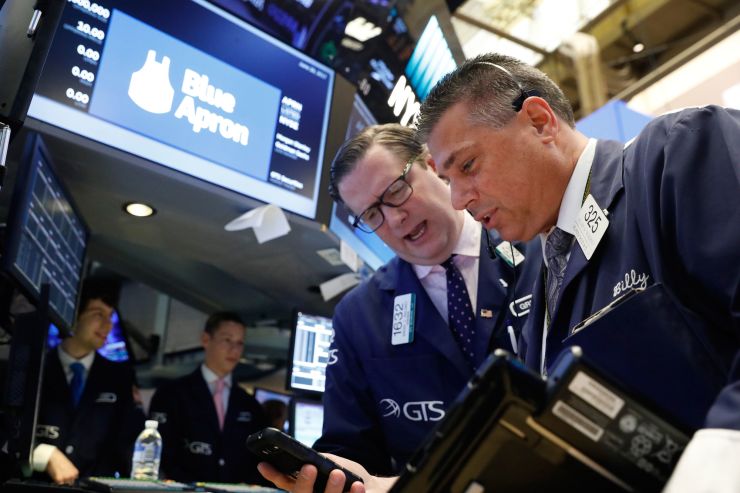
Stocks fell on Friday after a sharp decline in Broadcom shares put other chipmakers and the broader tech sector under pressure.
The Dow Jones Industrial Average slid 17.16 points, or 0.1%, to 26,089.61. The S&P 500 declined by 0.2% to 2,886.98 as the tech sector dropped 0.8%. The Nasdaq Composite lagged, falling 0.5% to 7,796.66.
Broadcom fell more than 5% after the chipmaker posted weaker-than-expected revenue for the previous quarter and cut its guidance for 2019, citing “broad-based ” demand weakness and the U.S. crackdown on Huawei. The VanEck Vectors Semiconductor ETF (SMH) fell 2.7%.
Other semiconductor stocks also fell. Micron Technology, Advanced Micro Technology and Applied Materials all closed down at least 1%. Dow member Intel dropped 1.1%.
The “weak 2H outlook could pressure AVGO/peers … and semis in general until we get a China/US trade resolution that can reignite customer confidence,” Bank of America analyst Vivek Arya said in a note. “We do assume that any volatile stock market correction could pressure the two sides to come to some kind of resolution.”
Sentiment on Wall Street was also dampened by disappointing industrial data from China. Industrial production in China rose 5% last month on a year-over-year basis, the slowest pace of growth in 17 years. Chinese shares fell overnight following the data release. The Shanghai Composite lost 1% while the Shenzhen A Shares index slid 1.8%.
The major U.S. stock indexes posted solid gains in the previous session, adding to this month’s sharp rally. The Dow, S&P 500 and Nasdaq are all up more than 4% for June through Friday’s close. The major indexes also posted back-to-back weekly gains.
U.S. retail sales rose 0.5% in May, according to the Commerce Department. That was below the 0.6% gain expected by economists polled by Refinitiv. However, April retail sales were revised higher. May sales were also up 0.5% when excluding auto, gas building materials and food.
“We continue to expect that a sharper slowdown in economic growth over the coming months will convince the Fed to cut interest rates, but the retail sales data reinforce our view that officials are likely to wait until the September FOMC meeting before pulling the trigger,” said Andrew Hunter, senior U.S. economist at Capital Economics.
The Federal Reserve is scheduled to hold a two-day meeting on monetary policy next week. The central bank is not expected to make any policy changes next week, but investors will look for clues about potential rate cuts later this year.
Market expectations for a rate cut in July were at 86.3%, according to the CME Group’s FedWatch tool. Investors are also pricing in a 70.1% chance of another cut in September.
“People are reading the Fed wrong. Everyone is expecting these cuts and the narrative is they will be supportive of the market,” said David Lafferty, chief market strategist at Natixis Investment Managers. “If the Fed is anywhere close to what the market is pricing in, which is two-to-three cuts in the next few months, that’s a Fed that’s in full retreat. I see that as undermining confidence.”

